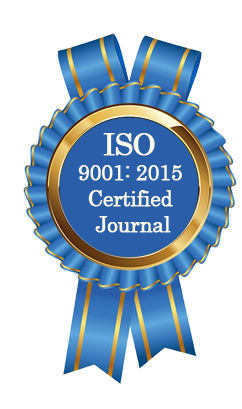| All | Since 2020 | |
| Citation | 105 | 60 |
| h-index | 4 | 4 |
| i10-index | 3 | 2 |
WJAHR Citation 
Login
News & Updation
Best Article Awards
World Journal of Advance Healthcare Research (WJAHR) is giving Best Article Award in every Issue for Best Article and Issue Certificate of Appreciation to the Authors to promote research activity of scholar.
Best Article of current issue
Download Article : Click here
Indexing
Abstract
BLOODY DIARRHEA IN CHILDREN UNDER TWO YEARS OF AGE IN MOSUL PROVINCE
*Alaa Adnan Al Ali and Ghazwan Younus Mohammed
ABSTRACT
Background: Diarrhea is one of the main causes of morbidity and mortality in children globally, resulting in one billion bouts of sickness and 1.8 million deaths per year. Bloody diarrhea often lasts longer than water diarrhea, is linked to more complications, is more likely to negatively impact a child's growth, and has a higher death rate. Objectives: Is to identify the most common causative agent of bloody diarrhea in children under 2 years of age, to find the important factors which predispose children to have bloody diarrhea and to throw a light on the main clinical feature of bloody diarrhea in Mosul province. Methods: A case-control study. The case group includes one hundred-forty-two children with bloody diarrhea (three or more loose bowel motions with visible blood in stool) were studied in Al-Salam Teaching Hospital in Mosul from the 15th of March to the 31th of December 2024. Those who had received antibiotics during their present illness and those with surgical conditions were excluded from the study. The questionnaire form includes six parts. Part one for socio-demographic information. Part two for patients’ chief complaint and its associated symptoms. Part three for patients’ type of feeding: breast, bottle, mixed and family food. Part four for type of water supply. Part five for physical examination findings. Part six for laboratory investigations including; stool cultures and tests, peripheral WBC count. The control group includes one hundred children with acute watery non-bloody diarrhea from the same age group and took from the same hospital. Stool culture and peripheral WBC count not done in the control group. Comparison with the control group was limited to risk factors and clinical features. Results: Enteropathogens were detected in stool of 120 (84.5%) subjects and identified as follows; 79 (55.6%) subjects of them had Entamoeba histolytica. Moreover; 17 (12%) subjects had E. coli, 15 (10.6%) subjects had shigella and 9 (6.3%) subjects non-typhoidal salmonella. Comparison between patients with Bloody diarrhea (bacterial, amebic, unknown source of infection) and those with watery diarrhea shows statistically significant difference between the two groups regarding weight for age (P value = 0.03), boiling of water (P value = 0.009), and history of animal contact (P value = 0.001), frequency of bowel motion (P value = 0.02), dehydration (P value <0.001), presence of fever (P value <0.001), tenesmus (P value <0.001), vomiting (P value = 0.002), rectal prolapse (P value <0.001) and convulsion (P value <0.001). Lastly; it’s evident that a statistically significant difference was found between patients bacterial, amebic and unknown cause of bloody diarrhea regarding their WBC counts. (P value <0.001). Conclusion: Entamoeba histolytica is the most common infection responsible for bloody diarrhea in Iraqi children ages less than 2 years. Children are more likely to develop bloody diarrhea if they have a poor nutritional condition, drinking non boiled water, or have domestic animals in their home. Bacterial bloody diarrhea is associated with higher peripheral leukocytosis than amebic bloody diarrhea. Encouragement of breast feeding and boiling of water reduces the danger of enteropathogen spread.
[Full Text Article] [Download Certificate]
